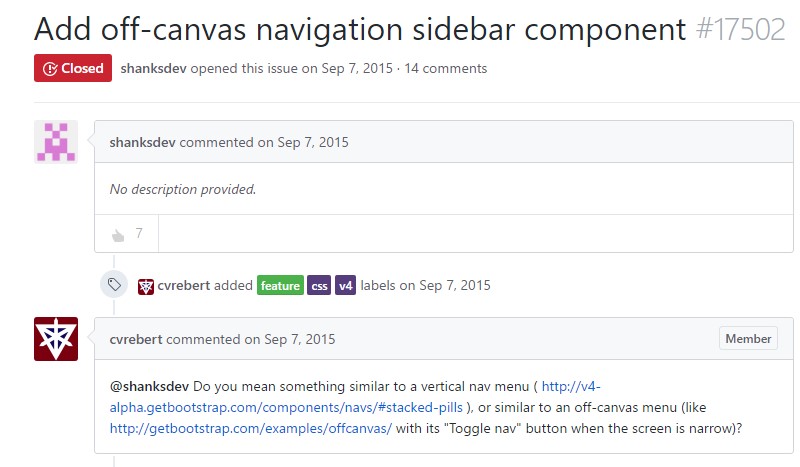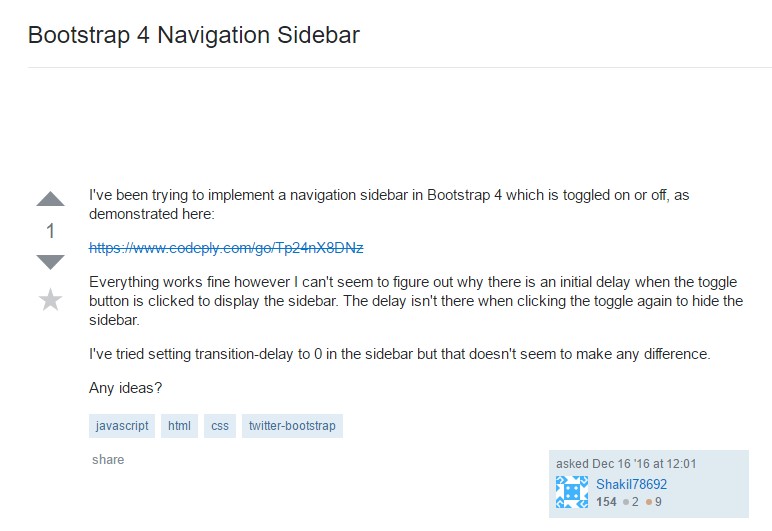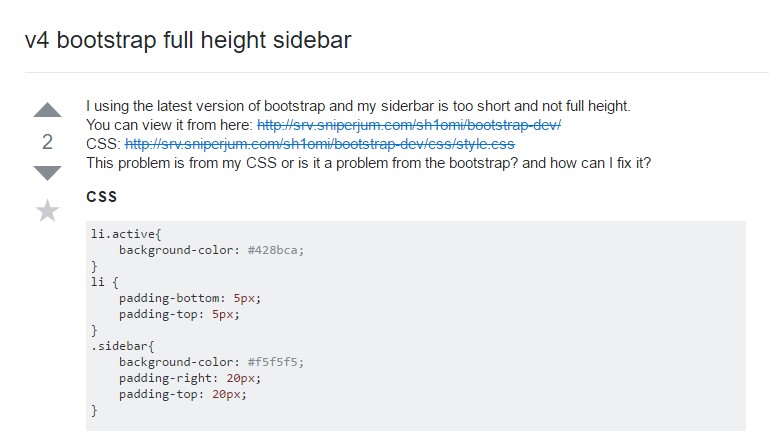Bootstrap Sidebar Menu
Introduction
Within the majority of the web pages we currently discover the content ranges from edge to edge in width with a handy navigation bar above and just effectively becomes resized when the identified viewport is achieved so basically the showcased material fluently employs the entire width of the webpage attainable. Even so at a particular instances the wanted target the pages must work in require together with the fluently resizing content zone another part of the obtainable screen width to get selected to a still vertical component together with certain web links and web content within it-- in other words-- the well-known from the past Bootstrap Sidebar Dropdown is required.
Tips on how to put into action the Bootstrap Sidebar Example:
This is rather old-fashioned technique however assuming that you really need to-- you have the ability to set up a sidebar component with the Bootstrap 4 system which along with its own flexible grid system also deliver a few classes made most especially for setting up a secondary rank navigation menus being actually docked throughout the web page.
But let us set up it quick-- with simply just nesting some rows and columns -- It is presumed this might be the best method. And by nesting I indicate you can gave a .row element positioned within a column one-- it generally performs the identical technique except for the provided columns in a single line restriction-- if you nest a row within a column you can easily have up to the column's width spanning inner columns within it prior to they wrap to a new line.
And so let's say we want a right adjusted Bootstrap Sidebar Toggle with some web content in it and a primary web page to the left of it. We must set up the grid tier down to what we need to maintain this positioning right before the sidebar and the main content stack over each other-- let us say-- medium and up. And so a workable method attaining this might be this:
Primarily we need to have a container feature to keep the rows and columns and considering that we are certainly developing something a little bit more complex the .container-fluid class might be the best one to specify it to-- in this manner it will always spread over the whole visible width accessible.
Next we require a .row to cover the primary system into which in our case would be a large column for the information and a more compact-- for the sidebar-- let's say we'll break up the width in 9 by 3 columns in width. And so the first column element must carry .col-md-9 and the second one - .col-md-3 class employed.
Next inside these types of columns we can easily just generate some supplemental .row components and pack them up up with some content creating initially the main page and after it-- the components of the sidebar like two smaller sized pages laid out side by side.
A few more suggestions
Additionally in case you need to create a sidebar navigation menu along with the desired .col-* class you can assign it the .sidebar class and wrap the page’s main content into a <main> element applying it the rest width with a .col-* class and appropriate offset equal to the sidebar’s width to make the nicely display side by side.
Additionally in the event you need to create a sidebar navigation menu together with the wanted .col-* class you can easily assign it the .sidebarclass and wrap the webpage's primary information into a <main> element utilising it the rest size using a .col-* class and proper offset identical to the sidebar's width to ensure the nicely display side by side.
Review some video clip guide regarding Bootstrap sidebar
Linked topics:
Bring in off-canvas navigation sidebar component

Stackoverflow: Bootstrap 4 Navigation Sidebar

V4 Bootstrap full height sidebar

Mobile Bootstrap Accordion Menu Demos
Free Bootstrap Collapse Menu Demos